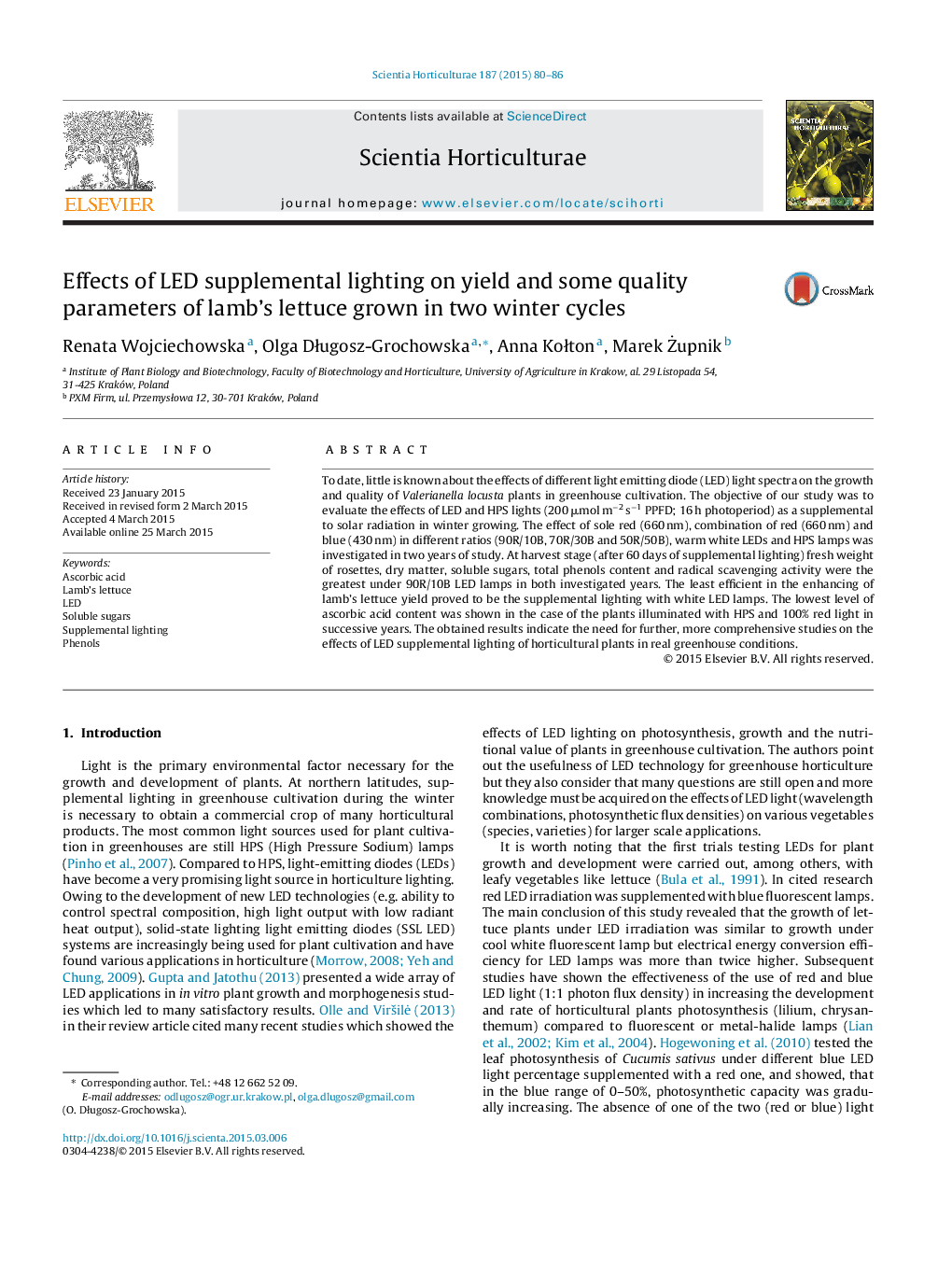| Article ID | Journal | Published Year | Pages | File Type |
|---|---|---|---|---|
| 4566365 | Scientia Horticulturae | 2015 | 7 Pages |
•LED lamps may replace HPS ones in greenhouse lamb's lettuce cultivation.•The best light treatment in yield increasing were 10B/90R and 30B/70R LED light.•Supplemental 10B/90R lighting enhanced sugars and phenols content in both years.
To date, little is known about the effects of different light emitting diode (LED) light spectra on the growth and quality of Valerianella locusta plants in greenhouse cultivation. The objective of our study was to evaluate the effects of LED and HPS lights (200 μmol m−2 s−1 PPFD; 16 h photoperiod) as a supplemental to solar radiation in winter growing. The effect of sole red (660 nm), combination of red (660 nm) and blue (430 nm) in different ratios (90R/10B, 70R/30B and 50R/50B), warm white LEDs and HPS lamps was investigated in two years of study. At harvest stage (after 60 days of supplemental lighting) fresh weight of rosettes, dry matter, soluble sugars, total phenols content and radical scavenging activity were the greatest under 90R/10B LED lamps in both investigated years. The least efficient in the enhancing of lamb's lettuce yield proved to be the supplemental lighting with white LED lamps. The lowest level of ascorbic acid content was shown in the case of the plants illuminated with HPS and 100% red light in successive years. The obtained results indicate the need for further, more comprehensive studies on the effects of LED supplemental lighting of horticultural plants in real greenhouse conditions.
